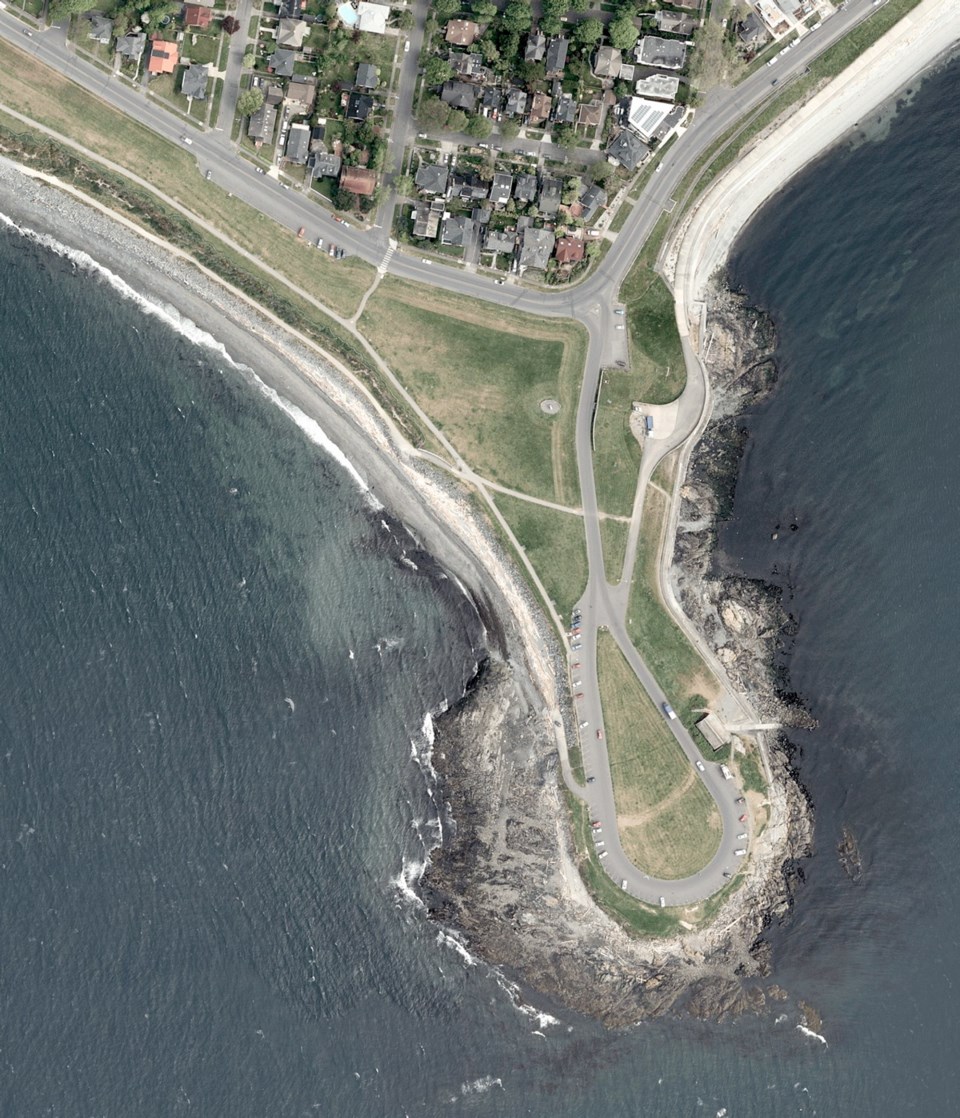Two plants — one underground at Clover Point and the other at either McLoughlin Point or in the Macaulay Point area — have become the top option for Greater Victoria sewage treatment.
The provincial government has stepped in to help refine a decision that Victoria Mayor Lisa Helps called a positive but “imperfect” step forward.
After a four-hour meeting Wednesday, the Capital Regional District sewage committee, chaired by Helps, approved a plan with a main option that calls for a tertiary-treatment plant at Clover Point in Victoria and a second plant at either McLoughlin Point or in the Macaulay Point area, both in Esquimalt.
Tertiary treatment refers to cleaning sewage to a point that it becomes usable water.
Committee member and Oak Bay Mayor Nils Jensen said the new arrangement could cost between $250 million and $300 million more than an abandoned option for a single plant at McLoughlin Point — shot down when Esquimalt council refused to approve zoning variances.
Jensen said the cost of the Clover Point and McLoughlin Point concept would be in the range of $500 million to $570 million, while a single McLoughlin plant would cost about $300 million. But Helps said direct comparisons cannot be made with information the committee currently has.
Jensen said: “We’re going to move forward, which I think is a very positive thing. We’re going to move forward with the province assisting us and we’re going to look at some alternatives, and the main alternative we’re going to look at is a dual plant — one at McLoughlin [Point] and one at Clover Point.”
The plan will be submitted to municipal councils for discussion.
Helps said she and Esquimalt Mayor Barb Desjardins, chairwoman of the CRD board, met with Community, Sport and Cultural Development Minister Peter Fassbender and Environment Minister Mary Polak before the meeting to discuss the sewage-treatment issue.
“They’ve offered to help us, so I think they’re as concerned as everyone around this table about getting this project done in a cost-effective way,” Helps said.
She stressed that the sewage committee has not approved a treatment option that is destined to be significantly more expensive than it was before.
“That is simply not the case,” Helps said. “I can assure I will not be voting in favour of a solution that’s going to cost $200 million more,” she said.
“The province has the expertise needed to help us in this Phase 2, where we’re going now, to bring the costs down through innovation, through the way we canvass the private sector.”
She said the public is “beyond ready” for the sewage committee to do something, and made reference to Washington state’s recent criticism of Victoria’s dumping of raw sewage into the ocean. Washington politicians are considering travel restrictions to Victoria by state workers because of the sewage dumping.
“I think the additional pressure from our colleagues in Washington state has helped to bring more attention to getting this done and to taking a step forward,” Helps said.
Premier Christy Clark said the province will do everything it can to help. “We want to deal with this issue as a province and as a country, because it’s not good for our relations with the United States,” she said. “But way, way more important, it’s 2016, and we shouldn’t be spewing human waste untreated into our incredibly valuable waterways.”
Fassbender said the province will provide staff to help find a way forward. The province has committed up to $248 million for the sewage-treatment project.
Committee member and Victoria Coun. Geoff Young called the two-plant concept a “two-headed compromise” that he could not support.
Jensen said he also has concerns. “We have been told by the federal government in very clear terms that we would have to reapply if we have two plants, which means there’s maybe another delay of a year to two years while we reapply for an infrastructure grant, and we may not get it.”
The CRD faces a March 31 deadline for selecting a site in order to get $83 million in federal funding.
Jensen noted that the previous treatment plan was stopped because Esquimalt did not want it, and now the City of Victoria will have the Clover Point site to consider with houses close by. “You’re a road away” from a major sewage plant, he said of area residences.
That is not an issue because of the type of plants possible with modern technology, Helps said.
Jensen said he is happy to see the province getting involved, adding that the current system allows individual municipalities to veto regional decisions. “The province seems to now be taking some responsibility. If they’re a player in this, they have to help.”
Helps began the meeting with an apology for how she handled discussions at a meeting last week. She said she was not practical, flexible and reasonable when she spoke and voted against having staff obtain more information about building a plant at McLoughlin Point.
— With Lindsay Kines



